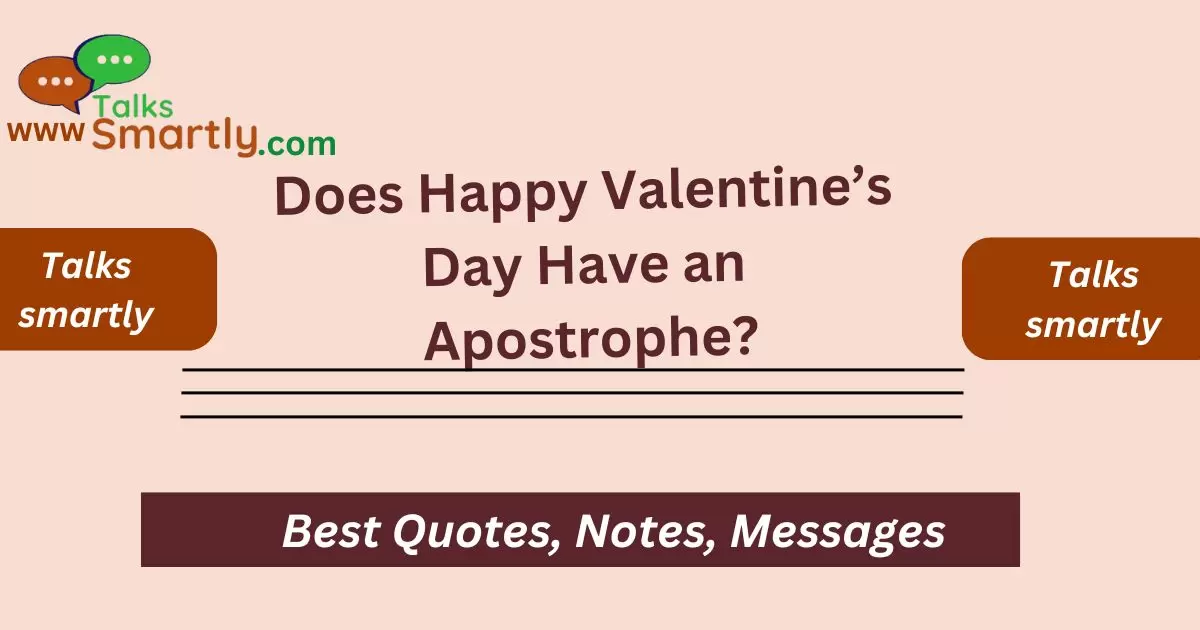Introduction:
“Happy Valentine’s Day” requires an apostrophe because it shows that the day belongs to or is associated with Saint Valentine. Despite debates, maintaining this punctuation honors tradition and the holiday’s origins.”
Happy Valentine’s Day is a phrase that we often see plastered on cards, in advertisements, and across social media every February 14th. But have you ever stopped to wonder about the apostrophe in Valentine’s? Does it belong there, or is it just a common mistake? In this article, we’ll delve into the intricacies of apostrophe usage and explore the historical context of Valentine’s Day to uncover the truth behind whether “Happy Valentine’s Day” has an apostrophe.
Understanding Apostrophes
To grasp the importance of the apostrophe in “Valentine’s Day,” it’s crucial to understand its function in the English language. An apostrophe often serves two main purposes: to indicate possession and to denote contractions.
When used to show possession, the apostrophe typically appears before the s at the end of a word, such as in “John’s car” or “the dog’s tail.” This indicates that the car belongs to John or that the tail belongs to the dog.
In contractions, the apostrophe replaces omitted letters to combine two words into one. For example, “can’t” is a contraction of “cannot,” and “it’s” is a contraction of “it is.”
Happy Valentines Day Wishes to Uncle in 2024
The Origin of Valentine’s Day
Before we delve into the intricacies of apostrophe usage in “Valentine’s Day,” let’s take a moment to explore the origin of this beloved holiday.
Valentine’s Day has roots in both Christian and ancient Roman traditions. It is believed to have been named after Saint Valentine, a third-century Roman saint who performed secret marriages for soldiers despite the emperor’s ban on marriage for young men. Over time, Valentine’s Day evolved into a celebration of romantic love and affection, marked by the exchange of cards, flowers, and gifts between loved ones.

Usage of Apostrophes in Valentine’s Day
Now, let’s turn our attention to the crucial question: does “Happy Valentine’s Day” require an apostrophe?
In this context, “Valentine’s Day” is used to refer to a day dedicated to honoring Saint Valentine. The apostrophe here indicates possession, implying that the day belongs to or is associated with Saint Valentine. Therefore, the correct form is indeed “Happy Valentine’s Day.”
Different Perspectives on Apostrophe Usage
Despite the clear rationale for including an apostrophe in “Valentine’s Day,” there are differing opinions on the matter.
Some argue that the apostrophe is unnecessary, suggesting that “Valentines” should be treated as a plural noun rather than a possessive noun. According to this viewpoint, the phrase should be “Happy Valentines Day” without the apostrophe.

However, proponents of the traditional usage point out that “Valentine’s Day” has been the accepted form for centuries, and altering it now would go against linguistic conventions.
Implications of Apostrophe Usage
The debate over the apostrophe in “Valentine’s Day” may seem trivial, but it raises larger questions about language evolution and preservation.
Language is dynamic, constantly evolving to reflect cultural shifts and changing norms. However, there is also value in preserving traditional usage and linguistic conventions that have stood the test of time.
By maintaining the apostrophe in “Valentine’s Day,” we not only uphold linguistic tradition but also pay homage to the history and origins of this cherished holiday.
Conclusion
In conclusion, the phrase “Happy Valentine’s Day” does indeed require an apostrophe. This punctuation mark serves to denote possession and acknowledge the connection between the day and Saint Valentine.
While there may be differing perspectives on apostrophe usage, the historical precedent and linguistic convention support the inclusion of the apostrophe in “Valentine’s Day.”
So, as you celebrate this day of love and affection, remember to embrace the apostrophe in “Valentine’s Day” as a symbol of its rich history and meaning.












